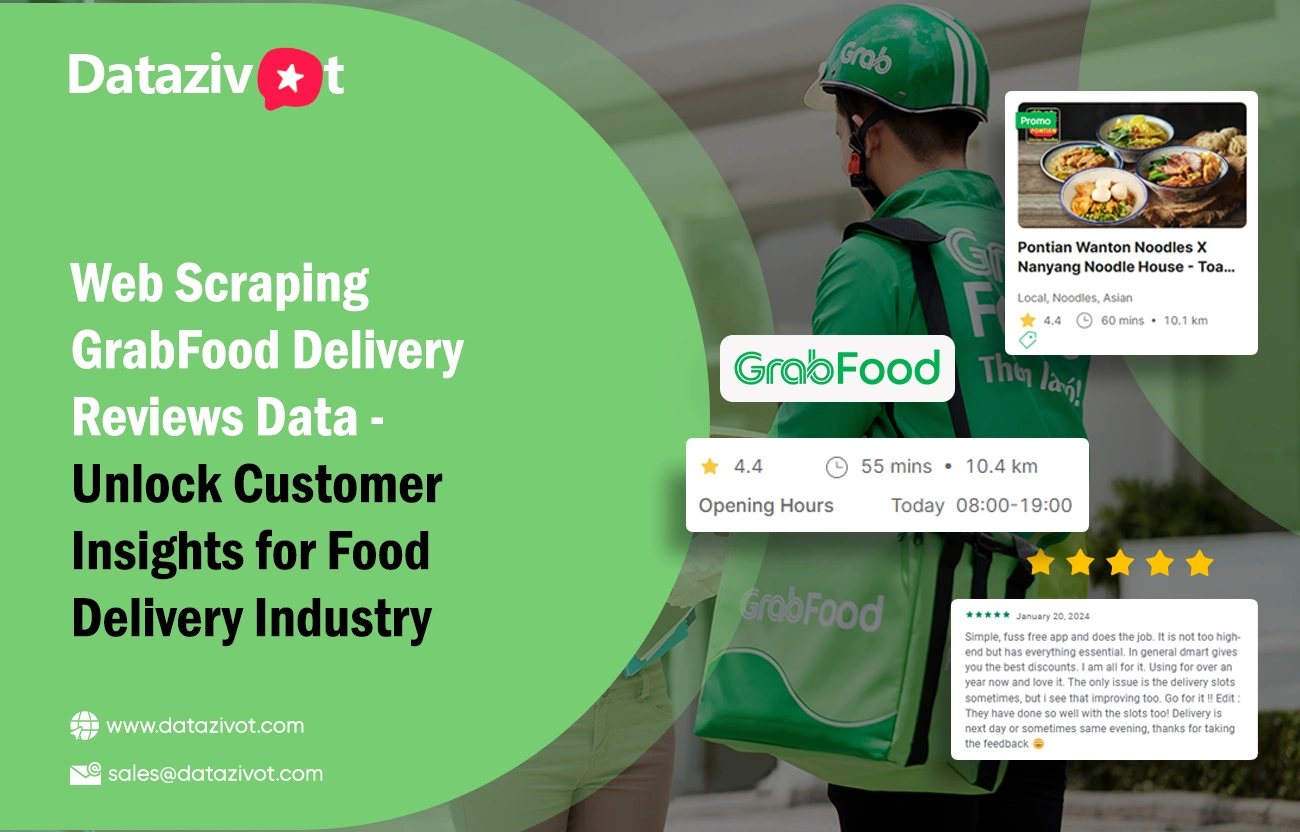
Introduction
In the ever-evolving food delivery market, customer reviews are more than just opinions—they're actionable data points that drive business decisions. With Southeast Asia’s GrabFood leading the charge in convenience-focused food delivery, its platform hosts millions of user reviews that offer invaluable insights for restaurants, aggregators, marketers, and analysts. But how do you access and analyze this data at scale?
That’s where Web Scraping GrabFood Delivery Reviews Data comes into play.
This comprehensive guide dives deep into the GrabFood Reviews Data Scraping process, why it’s crucial, how to do it responsibly, and what you can learn from it. By the end of this blog, you'll have a complete roadmap to Scrape GrabFood Reviews Data, leverage a GrabFood Reviews Data Extractor, and build a powerful GrabFood Reviews Scraper pipeline to drive smarter decisions in the food-tech world.
What is GrabFood?
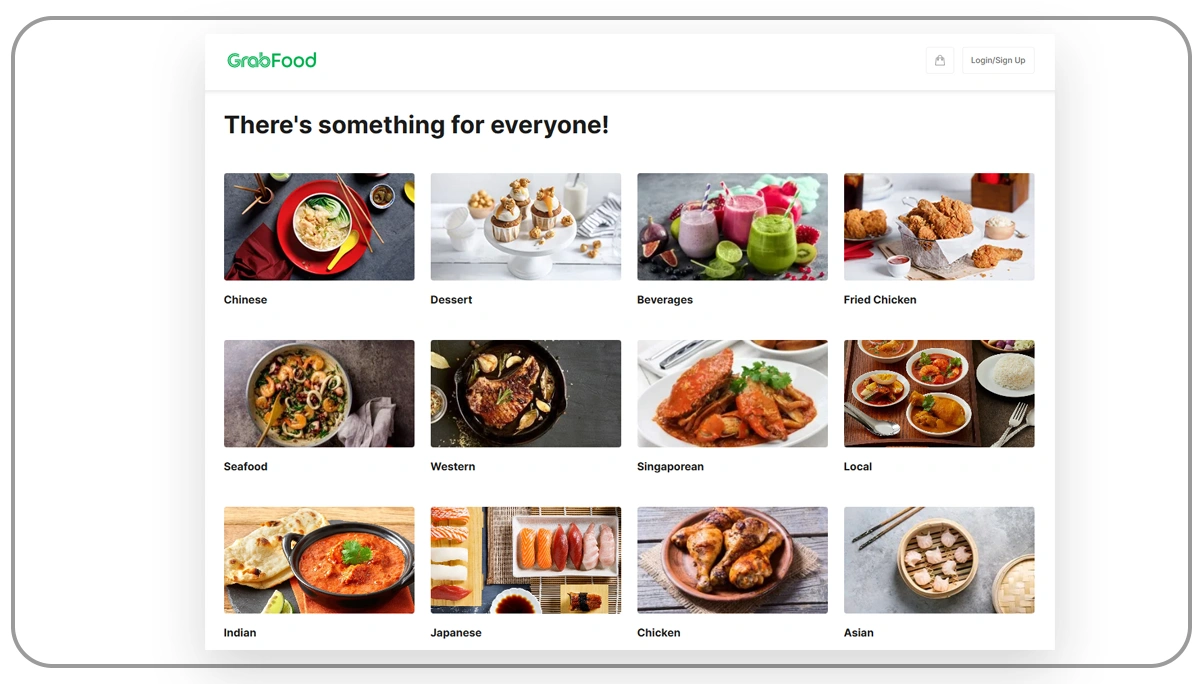
GrabFood is the food delivery arm of Grab, Southeast Asia’s leading super app. Available in countries like Singapore, Malaysia, Indonesia, Thailand, and the Philippines, GrabFood allows users to order meals from thousands of restaurants and eateries.
Alongside each restaurant listing is a review system—a goldmine of feedback about food quality, delivery experience, and customer service. The more data you gather from these reviews, the clearer your understanding of market demands and customer satisfaction becomes.
Why Scrape GrabFood Reviews Data?
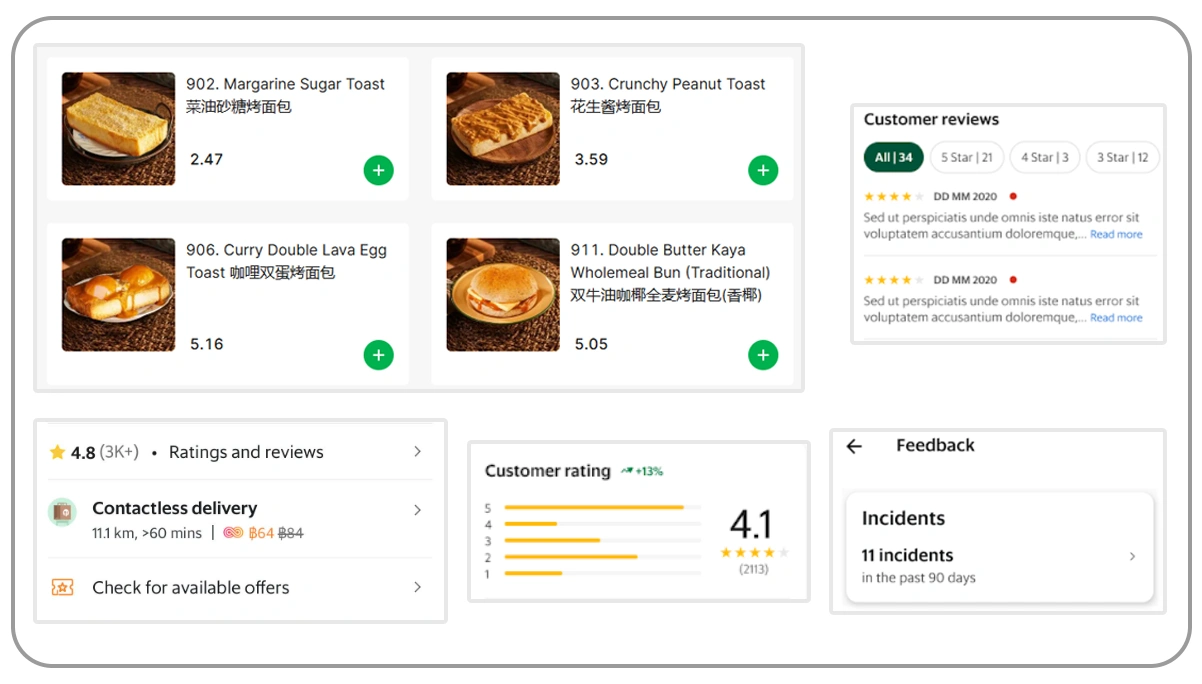
Here’s why scraping GrabFood reviews data is so powerful:
1. Understand Customer Sentiment
Whether you're a restaurant, competitor, or food-tech company, understanding what people love or hate about certain eateries is critical. Analyzing sentiments (positive, neutral, negative) helps refine service delivery and product offerings.
2. Monitor Performance of Restaurants
From local vendors to international chains, tracking the reviews over time shows how each restaurant’s performance trends based on customer feedback.
3. Competitive Analysis
Benchmark your services or restaurant against local competitors. Identify who’s leading the market based on review volume and ratings.
4. Product and Menu Optimization
Discover common complaints or praised items. Use this information to tweak your menu for better reception.
5. Identify Market Trends
Track trends in user preferences—like the rising popularity of vegan or low-carb options—directly from user reviews.
What Kind of Data Can Be Extracted?

A GrabFood Reviews Data Extractor can pull structured and unstructured fields such as:
- Review rating (1-5 stars)
- Review text
- Restaurant name
- Location/City
- Date and time of the review
- Reviewer name or pseudonym
- Order tags (e.g., "Late Delivery", "Hot and Fresh")
- Food items or categories mentioned
Tools for Web Scraping GrabFood Reviews Data
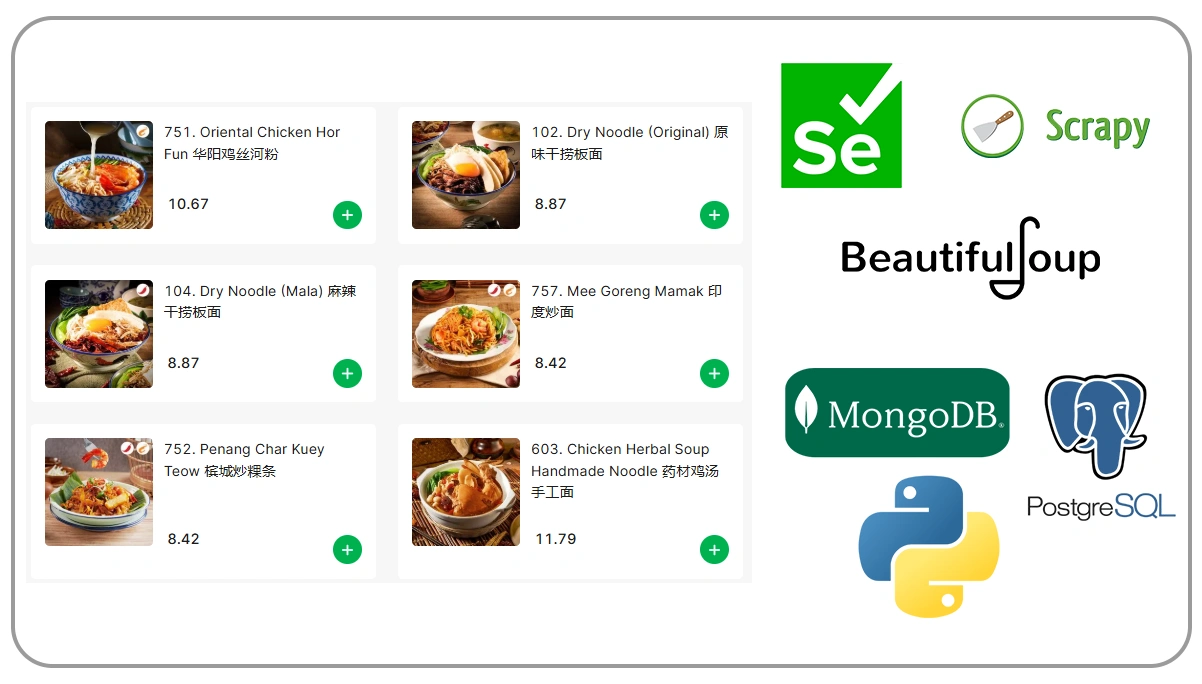
To build a reliable Grab Food Reviews Scraper, you’ll need the right tools. Here’s a stack that works:
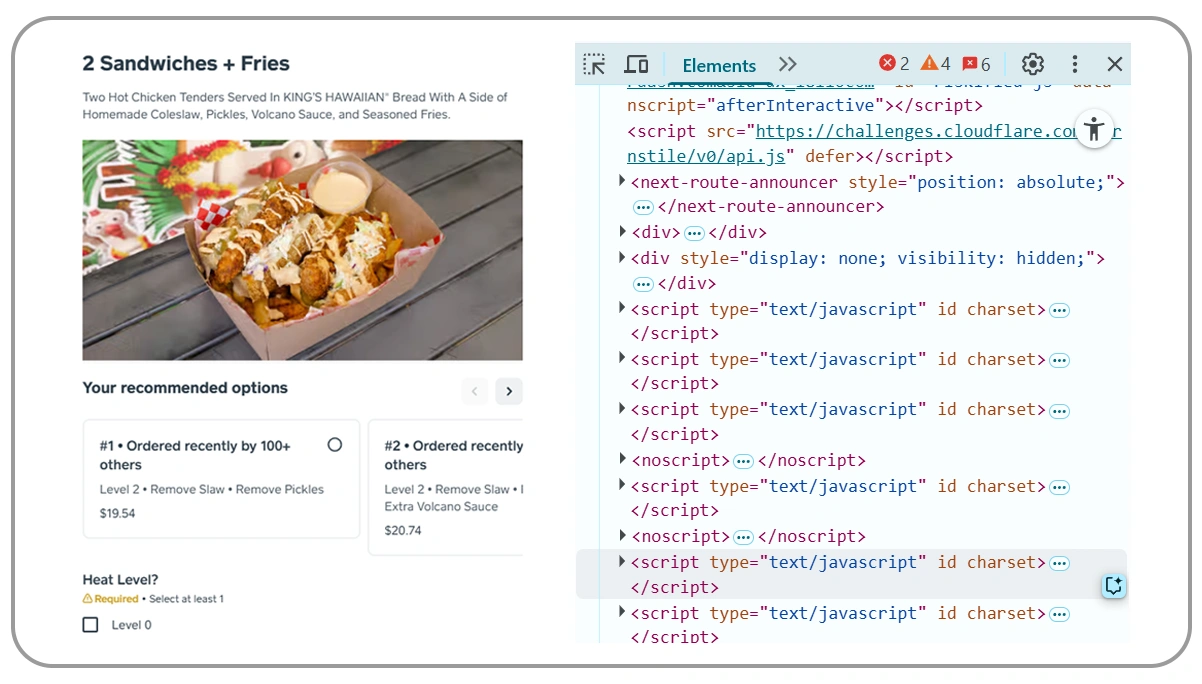
Python Libraries:
- Selenium: Best for JavaScript-rendered reviews
- BeautifulSoup: HTML parsing
- Requests: For API endpoints and static content
- Scrapy: For larger, scalable scraping jobs
Data Processing:
- pandas, NumPy: Data handling
- nltk, TextBlob, VADER: Sentiment analysis
- matplotlib, seaborn: Visualization
Storage:
- JSON, CSV: for quick exports
- MongoDB or PostgreSQL: for structured storage
Sample Python Code for Static Review Extraction
If GrabFood reviews are accessible without heavy JavaScript rendering, a simple script could look like this:
import requests
from bs4 import BeautifulSoup
url = 'https://www.grab.com/sg/food/vendor/re...views';
headers = {'User-Agent': 'Mozilla/5.0'}
response = requests.get(url, headers=headers)
soup = BeautifulSoup(response.content, 'html.parser')
reviews = soup.find_all('div', class_='review-card')
for review in reviews:
rating = review.find('div', class_='rating-stars').get('data-rating')
text = review.find('p', class_='review-content').text
print(f"Rating: {rating} | Review: {text}")
Note: This is hypothetical. Real implementation depends on how Grab structures its HTML or API.
How to Analyze the Scraped Data?
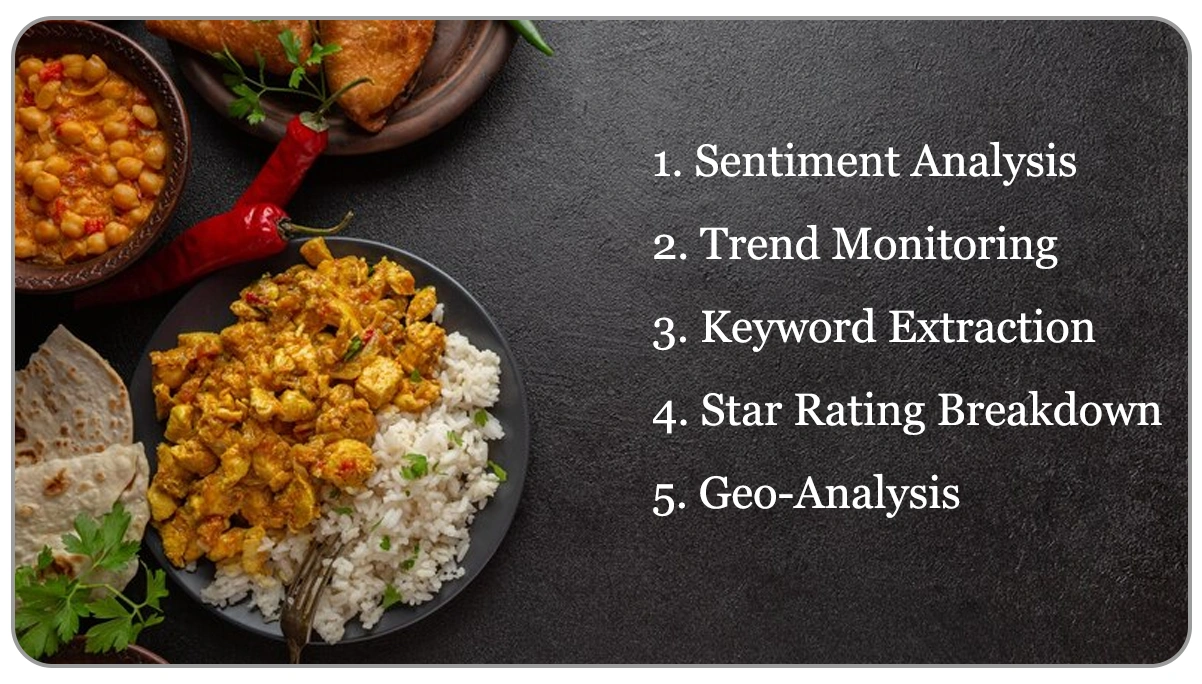
Once you've scraped and stored the review data, here are some powerful analysis techniques:
1. Sentiment Analysis
Use NLP libraries to categorize reviews as:
- Positive
- Neutral
- Negative
2. Trend Monitoring
Track reviews over time to spot improvement or decline in service.
3. Keyword Extraction
Find commonly used words like:
“Fast delivery”
“Cold food”
“Generous portion”
4. Star Rating Breakdown
Create visual breakdowns of average ratings by restaurant or region.
5. Geo-Analysis
Map sentiments across different cities or neighborhoods.
Use Cases of GrabFood Reviews Scraping For Restaurants:

- Optimize menu offerings
- Improve delivery logistics
- Monitor customer satisfaction
For Aggregators:
- Build dashboards for restaurant rankings
- Track market leaders by city
For Analysts:
- Create datasets for machine learning
- Predict food delivery patterns
For App Developers:
- Suggest top-rated restaurants nearby
- Auto-filter poor reviews or flag issues
Challenges in Scraping GrabFood Reviews Data

1. JavaScript-Rendered Pages
GrabFood’s site may load reviews dynamically. Use Selenium or Playwright for full-page rendering.
2. IP Blocking & Rate Limiting
Rotate proxies and add delays to avoid bans.
3. Captchas or Anti-Bot Measures
Some pages may include bot detection—use headless browsers and human-like behavior patterns..
4. Changing Site Structures
Webpages change often. Use adaptable code and automated testing.
Legal & Ethical Considerations
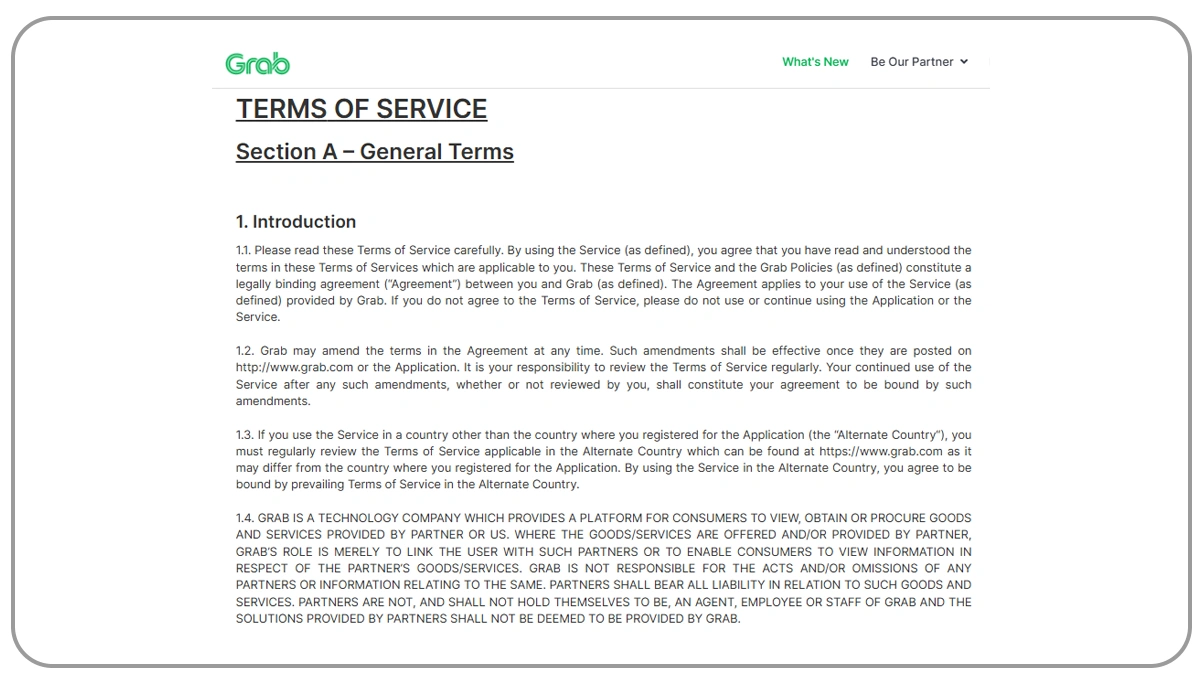
Before deploying any GrabFood Reviews Scraper, consider the following:
- Always check Grab’s Terms of Service
- Review robots.txt for scraping permissions
- Do not scrape private or personally identifiable info
- Avoid overloading servers—respect request rates
- Use data internally or for permitted research
Building a Scalable GrabFood Reviews Scraper Pipeline
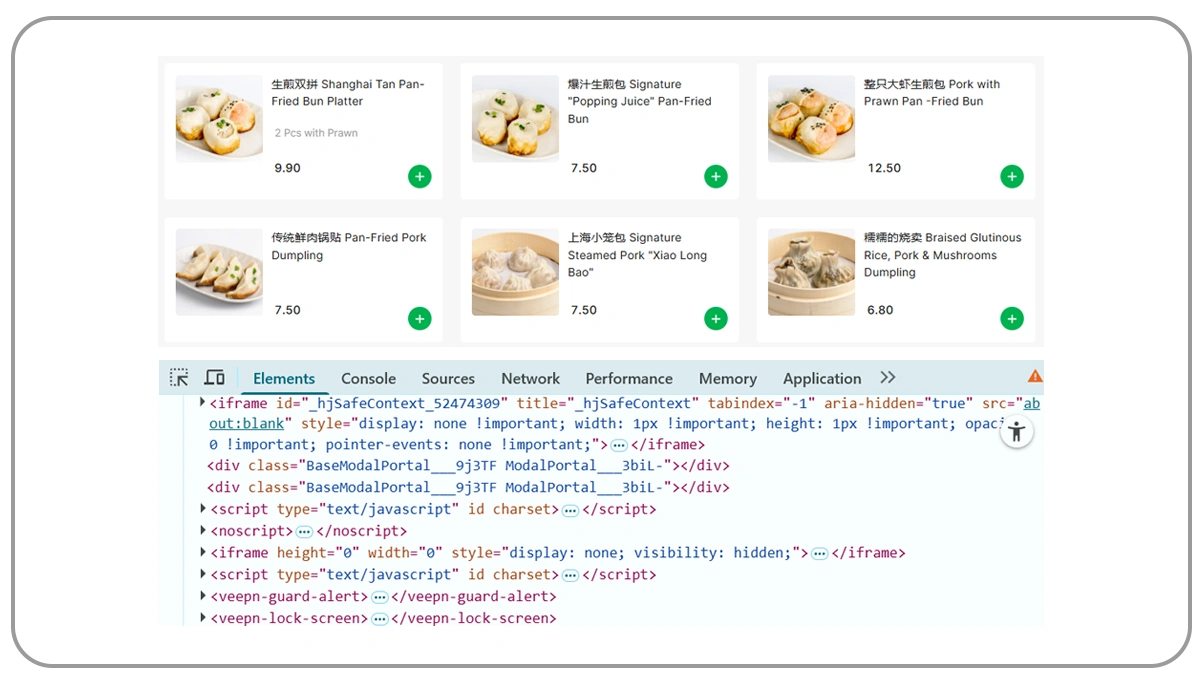
Here’s a step-by-step pipeline to handle large-scale scraping:
Step 1: Identify URL Patterns
Use category pages or city-level search results to find restaurant URLs.
Step 2: Extract and Paginate Reviews
Automate through "Load More" or scroll-based pages.
Step 3: Clean and Parse Data
Standardize timestamps, clean HTML tags, remove duplicates.
Step 4: Store in Database
Save to MongoDB/PostgreSQL for querying and analysis.
Step 5: Analyze & Visualize
Use Dash, Streamlit, or Tableau for business-friendly dashboards.
Step 6: Schedule for Updates
Set cron jobs or Airflow DAGs to refresh data weekly or daily.
Example Insights from GrabFood Review Scraping

Imagine scraping 100,000 reviews across 5 countries. Here’s what you could discover:
- Top-rated food categories (e.g., sushi, biryani, bubble tea)
- Most mentioned delivery problems by city
- Average rating trends over time
- Customer behavior patterns on weekends vs. weekdays
- Cities with the best delivery satisfaction scores
Localization Strategy Using GrabFood Reviews
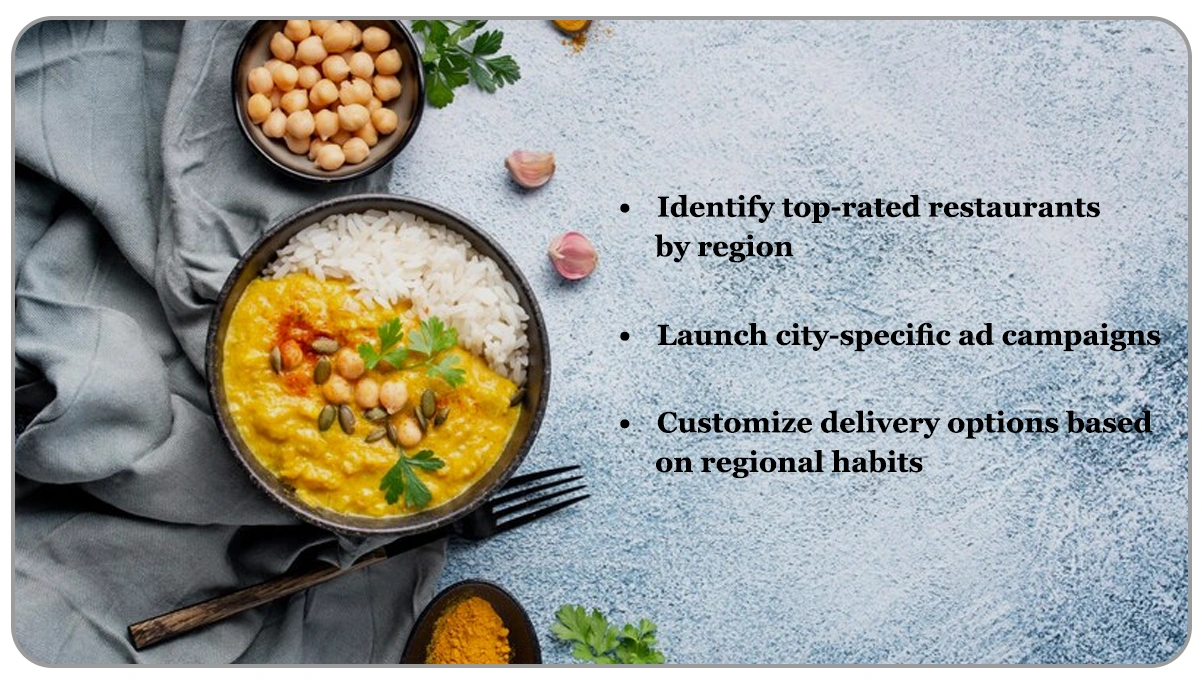
You can use location-tagged reviews to:
- Identify top-rated restaurants by region
- Launch city-specific ad campaigns
- Customize delivery options based on regional habits
Using ML with GrabFood Review Data

Once your GrabFood Reviews Data Scraping pipeline is ready, apply machine learning to:
- Predict restaurant ratings based on past reviews
- Cluster reviews to detect complaint categories
- Train chatbots to answer food delivery FAQs
- Perform topic modeling (LDA) for feedback themes
GrabFood Review Scraper as a SaaS Tool
You can even productize this as a service offering:
- API access to latest reviews
- Pre-built dashboards for restaurant managers
- Alerts for sudden review drops or negative spikes
- CSV/Excel exportable data for BI teams
Why Choose Datazivot?
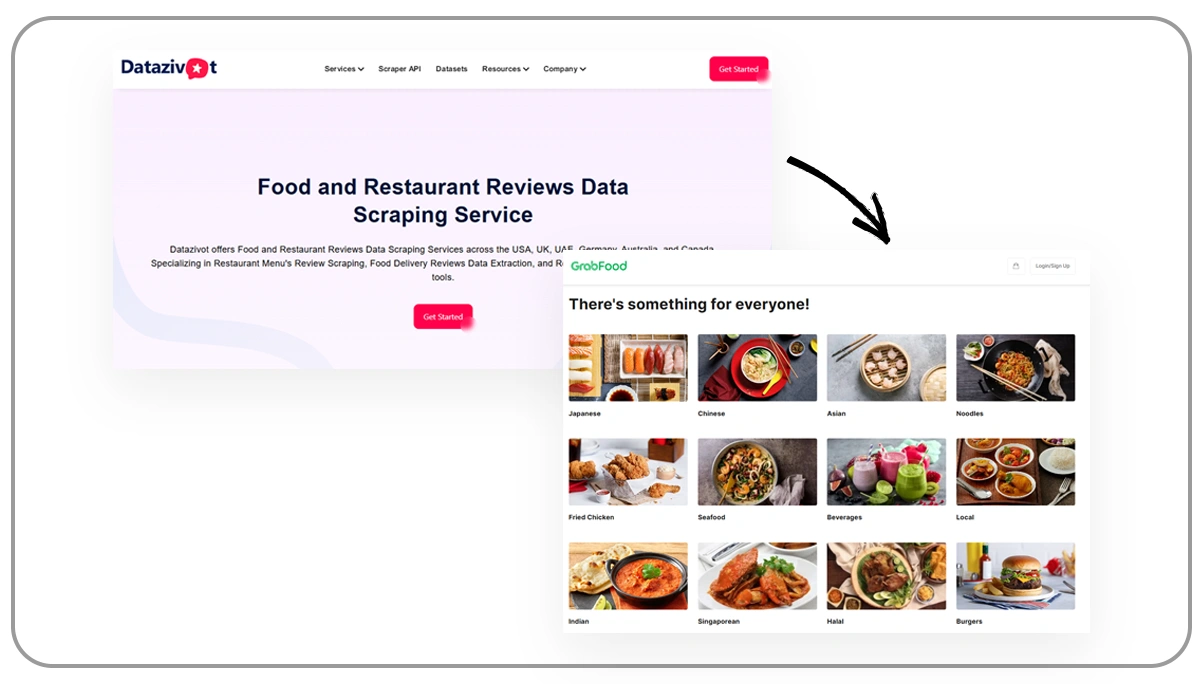
Datazivot is your trusted partner for high-quality web scraping GrabFood delivery reviews data. We specialize in GrabFood reviews data scraping, offering precise and structured insights to fuel your business decisions. With our powerful GrabFood reviews data extractor, you can seamlessly scrape GrabFood reviews data in real time, enabling sentiment analysis, customer feedback evaluation, and competitive research. Our advanced GrabFood reviews scraper ensures reliable, fast, and scalable data extraction tailored to your needs. Choose Datazivot for accurate data, expert support, and scalable solutions designed to elevate your digital strategy with actionable insights from GrabFood customer reviews.
Conclusion
In today’s hyper-competitive food delivery space, data is king—and Web Scraping GrabFood Delivery Reviews Data is one of the most strategic moves businesses can make. From understanding customer sentiment to optimizing menu items, GrabFood Reviews Data Scraping unlocks high-impact insights.
Whether you're a startup, restaurant chain, analyst, or tech platform, investing in a robust GrabFood Reviews Scraper helps you stay one step ahead in the market.
So, if you want to future-proof your business in the on-demand food economy— start with Scraping Reviews Data today.
